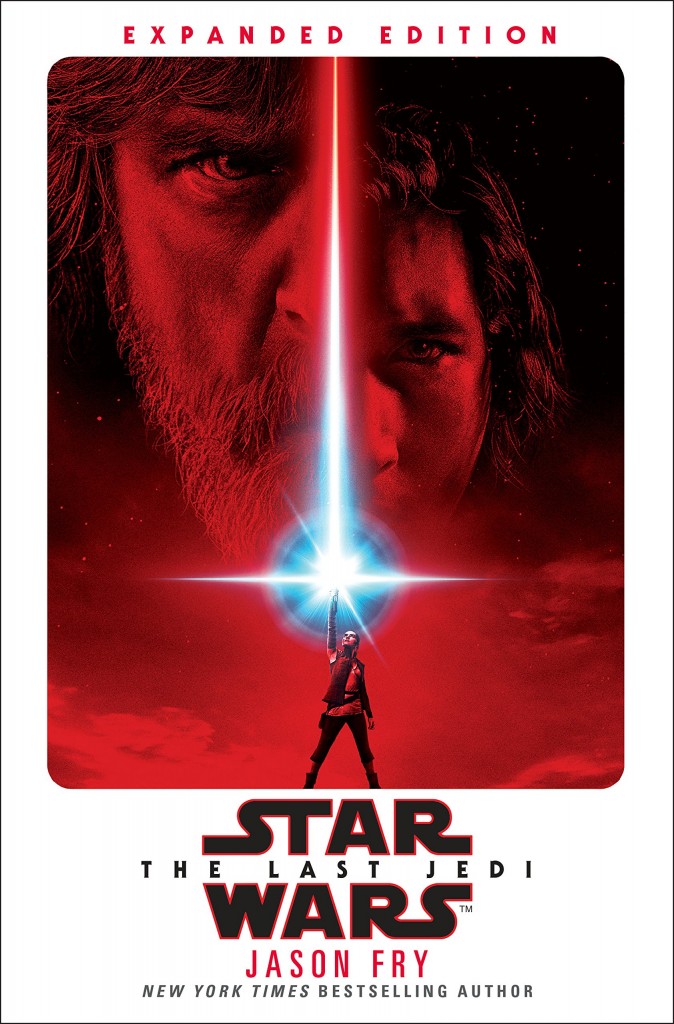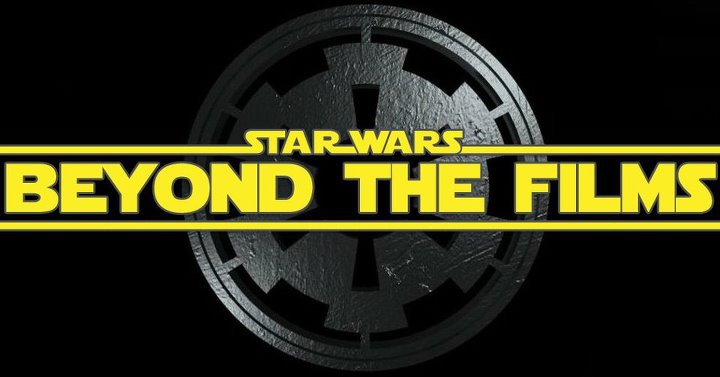Star Wars Beyond the Films‘ Nathan P. Butler is now posting short, non-spoiler reviews for many new releases. Spoiler-filled discussion will often follow in the weeks or months thereafter on the podcast.

The Last Jedi: Expanded Edition by Jason Fry (hardcover, 2018)
2017’s The Last Jedi proved to be more than just the next episode in the Star Wars saga. It turned elements of the saga on their heads, defied audience expectations, and became a lightning rod for fandom polarization the likes of which have not perhaps been seen since the beginnings of the Disney purchase of Lucasfilm. Three months after its theatrical release, Jason Fry’s novelization of the film arrives as an Expanded Edition, boasting new scenes. So, how well does this novelization fare, and is it able to induce what I years ago dubbed “the Stover Effect?”
The Last Jedi: Expanded Edition
Two things should be made clear up front here. First, in the interest of full disclosure, I have worked with Jason Fry in the past on Star Wars: The Essential Atlas, so I do have a personal connection to the author, which I’d hope wouldn’t color my view of his work. Second, this is a novelization of a film. That means that while we can expect perhaps some new scenes and added details that can’t be captured on the big screen, the story is not going to be fundamentally different from the film itself. That means those that disliked (or even loathed) The Last Jedi are not going to be dissuaded from that opinion by this book. Therefore, this review is meant for a target audience of those who either enjoyed the film or were at least moderate enough in their view to be interested in whether a novelization thereof might be worth a read.
Years ago on one of the various podcasts I’ve hosted, I coined a term: the Stover Effect. My experience of listening to the unabridged audiobook of Revenge of the Sith by Matthew Stover prior to seeing the film had so fundamnetally informed and enhanced the experience of seeing the film that it seemed as though it was a rather different experience than viewing would have been without having gone through the novelization. It was an instance of a novelization or tie-in story uplifting the material it was adapting (or tied into) to a significant degree. In fact, for many years, ROTS was my favorite Star Wars film, and I give equal, if not more, credit for that to Stover’s novelization than to the film itself. Since then, I have used the term “Stover Effect” to describe any instance of an adaptation or tie-in that uplifts its “core” material or makes that experience deeper or more enjoyable. It is the standard by which I tend to judge all such works.
The Last Jedi: Expanded Edition adapts the film of the same name in prose, which allows for insights into character motivations, background of technologies (such as similar details on how the Supremacy‘s active hyperspace tracking works to what is found in the Incredible Cross-Sections for The Last Jedi, also written by Fry), and provides explanations for things that some audience members have questioned since they appeared on-screen. Perhaps more importantly than anything else, this novelization does to bolster the story of the Sequel Trilogy is in its description and explanation for why Rey seems to grow immensely in Force abilities in such a short time without direct training. (Yes, there’s a reason. No, I won’t spoil it here.) By and large, these additions are worthwhile and flesh out small corners of the story, but rarely more than one would expect from a Visual Dictionary or other such work (though with the added bonus here that such information appears naturally within the flow of the story, rather than in a standalone guidebook). The aforementioned information about Rey’s abilities and a short exploration into Snoke’s origins in relation to his leadership of the First Order have yet to be covered elsewhere, however.
The real selling point of the novelization, though, is its selection of added scenes, many of which were deleted scenes from the film or scenes suggested by director Rian Johnson when Fry had the opportunity to work with him on new content. These include long-awaited scenes like the funeral of Han Solo, Rey’s other lesson (remember that Luke promised three, but we only saw two), a bit more with Rose and Paige Tico (which again makes sense, given that Fry wrote their story in Bomber Command alongside Elizabeth Wein’s Cobalt Squadron), and a vision/dream sequence for Luke (which was misreported frequently online as “proof” that Luke had a wife at some point). All of these scenes are nice additions, and while they do not make or break the viewing experience with their presence, they add a bit more to what we know of the characters and motivations (including why Luke was heading to see Rey just before their last conversation in the film, which will entirely change the context of that moment for many readers).
But does the Stover Effect apply, and, if so, where does it fall in terms of that effect from other Star Wars novelizations? For that, keep reading for the final verdict below.
Again with the Variants!
As usual for recent Del Rey Star Wars novels, The Last Jedi: Expanded Edition arrives in several flavors of variant. The standard version of the novel features the film’s Celebration Orlando teaser poster as its cover and includes eight pages of full-color photos from the film. A second version, exclusive to Barnes and Noble, increases the count of photo pages to sixteen. Books-a-Million, meanwhile, is selling a version with just the regular eight pages of photos but an extra page in the front where the author has signed this edition. Finally (or perhaps I should say, originally, given that it arrived a bit early), a variant exists from Emerald City Comic-Con (yes, another blasted convention exclusive that was tough to get even for those who went to the convention), which features variant art for its cover (similar to Target’s upcoming Blu-ray/DVD/Digital home video release packaging).
A Minor Quibble But Still an Annoyance
This may be a minor quibble, and it doesn’t detract from the story, but it is somewhat jarring at times. The novel has quite a few typographical errors, such as errant quotation marks, and there are a few instances of incorrect spelling of character names, such as “Kaydel Ko Connix” referred to consistently in the novel as “Kadel.”
The Verdict
I was already a fan of The Last Jedi, and I recognize that this novelization won’t end up changing anyone’s mind on the film. However, for those who did enjoy the film, I would argue that this book proviodes a Stover Effect that is second only to Stover’s ROTS novelization (the namesake for the effect) in its enhancement of the film it is meant to accompany. For those who enjoyed TLJ, this novelization will make an interesting read, even if you think you already know all there is to know about the film’s story. I would highly recommend giving it a read before diving into TLJ on home video. You may find your experience richer than that in the theater.
Recommended for: Those interested in an enhanced The Last Jedi experience.
Not recommended for: Those who simply didn’t enjoy The Last Jedi in the first place.
A review copy of The Last Jedi: Expanded Edition was received shortly after release, but the copy read for this review was a signed copy ordered at retail through Books-a-Million.
